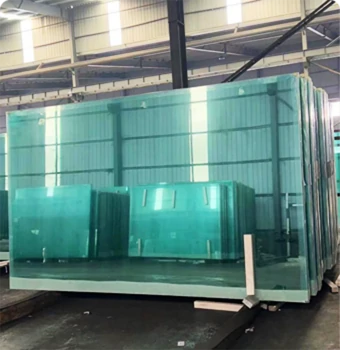Oct . 18, 2024 06:28
The Cost of Low Iron Glass An Overview
Low iron glass, known for its exceptional clarity and high light transmission, has become increasingly popular in various applications, from architecture to solar panels. Unlike standard glass, which contains iron impurities that impart a greenish tint, low iron glass is manufactured using raw materials that drastically reduce iron content, resulting in enhanced transparency. This article delves into the cost factors associated with low iron glass, exploring its production, applications, and the economic implications of choosing this premium material.
Production Costs
The production of low iron glass begins with the selection of high-purity raw materials. Silica sand, alumina, and soda ash are typically used in its manufacture, but the quality of these materials is crucial. The cost of sourcing high-grade raw materials can be significantly higher than that for regular glass. Additionally, the production process itself requires advanced technology, including precise melting furnaces and sophisticated control systems to maintain the low iron levels. These technological advancements translate to higher capital and operational costs for manufacturers, which is reflected in the price of the final product.
Market Demand and Supply
The demand for low iron glass is increasingly driven by industries that prioritize aesthetics and performance, such as the construction and renewable energy sectors. In architectural applications, low iron glass is favored for facades and interior design due to its ability to provide an unobstructed view and maximize natural light. In the solar industry, it is used for photovoltaic panels, where high light transmission can improve energy efficiency. This rising demand can place upward pressure on prices. However, the production capacity of low iron glass has been gradually increasing, helping to stabilize supply and potentially moderate costs in the long run.

Comparative Costs
When evaluating the cost-effectiveness of low iron glass, it is essential to consider its performance benefits over standard glass. Although the initial cost of low iron glass is typically higher—often ranging from 15% to 30% more than regular glass—the long-term advantages can outweigh this expenditure. The increase in natural light can reduce the need for artificial lighting, leading to lower energy costs. Furthermore, in solar applications, the efficiency gained through higher light transmission can significantly enhance energy harvest, translating to more rapid returns on investment.
Applications and Their Impact on Cost
The use of low iron glass extends to various fields, including automotive, display technology, and refrigerated cases. In automotive applications, low iron glass is employed to enhance visibility and safety, potentially reducing the cost of accidents and insurance premiums for drivers. In retail environments, its use in display cases can improve product visibility, driving sales and enhancing customer experiences. These applications illustrate how low iron glass may offer improved value beyond its upfront costs.
Conclusion
In summary, low iron glass presents a unique blend of aesthetic appeal and functional superiority, which make it a sought-after material in various industries. While the production costs are higher compared to traditional glass, the long-term benefits in terms of energy efficiency, aesthetic value, and enhanced performance can justify the investment. As market dynamics evolve and technology advances, the cost of low iron glass may become more competitive, making it an even more attractive option for consumers and manufacturers alike. Understanding these cost factors is critical for stakeholders looking to make informed decisions in their glass selections.
The Role of Mirror Glass in Luxury Interior Design
NewsJun.23,2025
The Best Textured Glass for Bathroom Windows
NewsJun.23,2025
Residential Glazing Energy Efficiency Requirements
NewsJun.23,2025
Float Glass Uses
NewsJun.23,2025
Clear Float Glass For Solar Panel Covers
NewsJun.23,2025
Benefits Of Using A Glass Mouse Pad Over Traditional Ones
NewsJun.23,2025